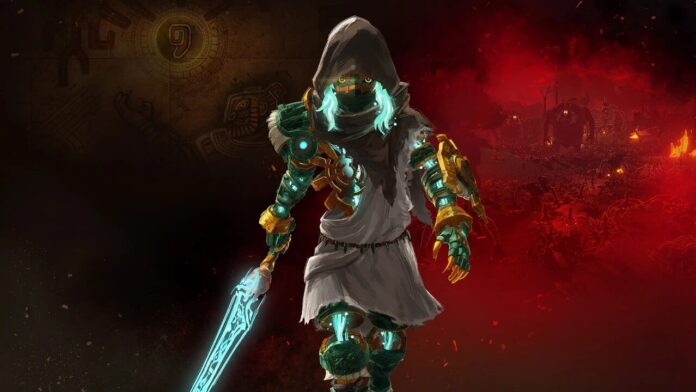Back in 2014 when I picked up the very first Hyrule Warriors on Wii U, my expectations were set somewhere around ‘Give me mindless musou action wearing its best Legend of Zelda costume and I’ll be a very happy boy.’ A simple boy, for sure, but a happy one.
And I was a happy boy. I played through Hyrule Warriors in a delirious blaze over a weekend (I had just become a dad for the first time, so my son spent some of his earliest days on earth watching his auld pa tear Moblin armies a new ar…mour hole), therefore this is a spin-off series that’s got a special place in my heart; it gives me my musou fix, it rocks Zelda vibes immaculately, and it provided me with a nice family memory. Hooray!
Fast-forward six years, and its sequel, Age of Calamity, tightened things up on the battlefield and ensured the story played a more integral role. Some people still prefer Hyrule Warriors, as it’s got more content, and I’d usually be on that boat with a game of this type. I mean, how deep can it get? I want to smash people, not fall asleep during cutscenes.

The thing is, though, the Zelda series is on such a massive high right now, certainly in terms of its lore, and so I want the narrative in my balls-to-the-wall action game. I want the plot, the drama, the surprises, the cameos, the deep lore references. And since Hyrule Warriors: Age of Imprisonment is 100% bona fide canon material, that’s exactly what they’ve delivered for this latest slice of Hylian…eh…hellaciousness?
Age of Imprisonment rolls with Calamity’s clever refocusing to deliver a game that balances best-in-class musou combat with a story that will have Zelda fans locked in. I won’t spoil any of it, but any niggles folk had with Age of Calamity’s ending shouldn’t cause any stress this time.
Nor do you need to stress the game’s performance or graphical prowess. Age of Imprisonment is a showcase for your shiny Switch 2. Yes, even in co-op mode. We’ve finally broken free from the prison of sketchy frame rates and blurry resolutions! *Does Moblin victory dance*
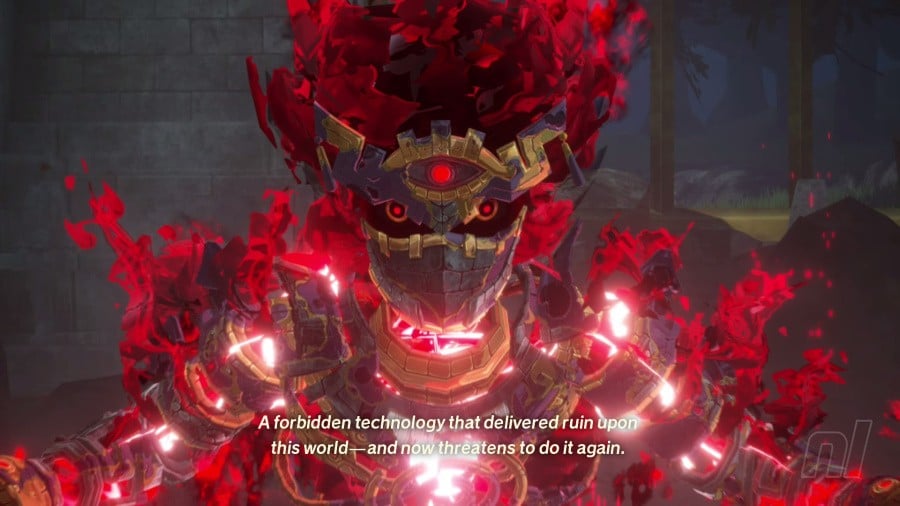
In main campaign mode, we’re looking at smooth 60fps action, and whilst I’m no Digital Foundry boffin, I can’t say I noticed a drop anywhere. For co-op play, 30fps is the target and it feels super-smooth, even if it is a step down switching from 60.
Now, let’s rewind a bit to where Age of Imprisonment picks up the action within the overall franchise framework, as I got a bit excited to tell you about performance. This latest effort takes place right back at the kingdom of Hyrule’s formation. Princess Zelda has accidentally travelled back in time using a secret stone and is thrown into the mix during the Imprisonment Wars, which every self-respecting Zelda fan has studied exhaustively.
Given that the story has got the full and official blessing of the lords of Hyrule, and is therefore 100% Pure Canon™, the devs have taken advantage and given us an adventure that consistently wows in its diligent attention to detail. Again, I am at pains to spoil nothing, but if you’re into taking an action-packed and informative tour of Hyrule’s past, one that happens to invite you to a blistering square-off against Ganondorf and his filthy armies, then prepare to have a very good time indeed.
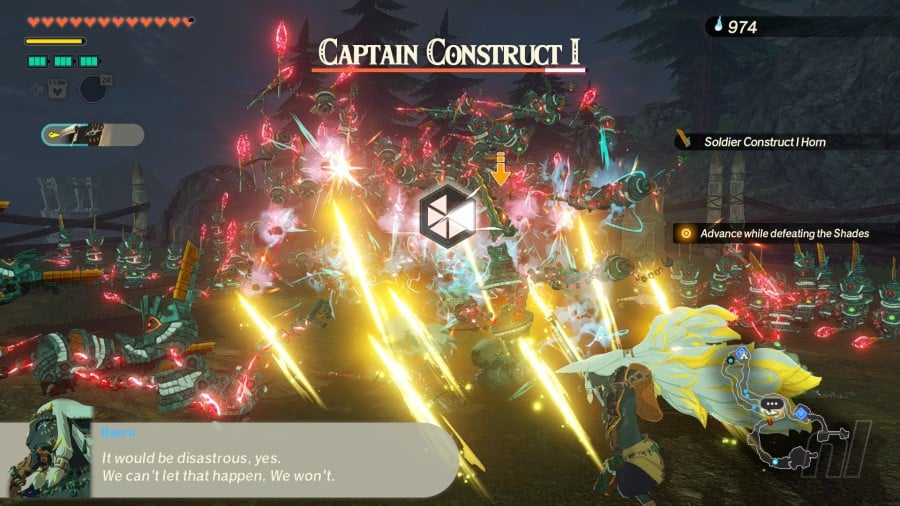
Old familiar places and faces abound, and the story that evolves around them is an exciting and satisfying one; one that lives up to the rich — and heavily scrutinised — universe of which it’s now a part.
This attention to detail pans out across the game’s menus and UI, flawless copies of those found in Tears of the Kingdom and Breath of the Wild, and extends to the in-game map, split into distinct regions that need to be wrestled back from the clutches of Ganondorf’s freshly-formed armies.
As it goes on, this map gets super-cluttered with quests, aside missions, and challenges, and Age of Imprisonment pulls off another nice balancing act here. Story missions are meaty affairs, and they give you all the pomp, ceremony, and production values you expect from a mainline Zelda. This is the main meat, and it’s powered by top-notch combat melded with a genuinely great story.
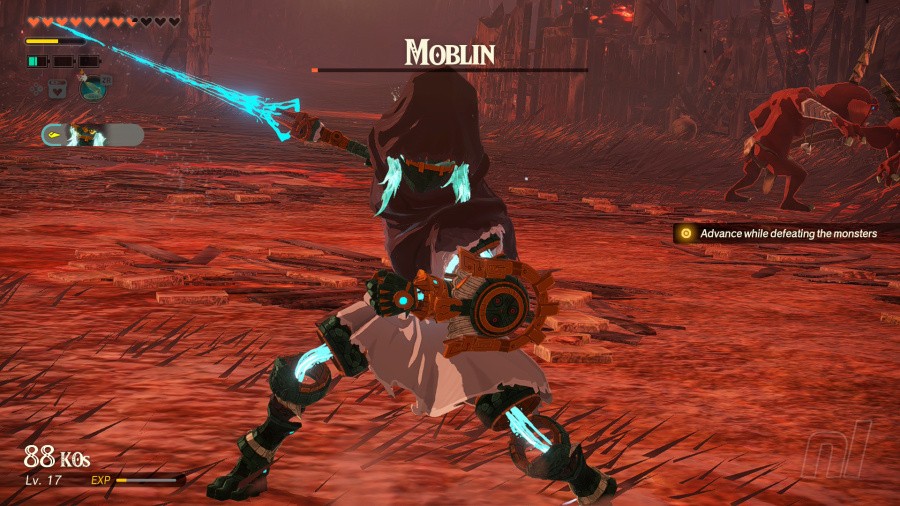
Then you get to liberate yourself with uncomplicated beatdowns. You know, the stuff musou fans turn up for: challenging fights against hordes of baddies on repeat until we whittle our times down and kill everything in sight without taking a hit.
Koei Tecmo’s new team, AAA Games Studio, has also cleverly leveraged aspects of the Zelda games to create the illusion of a much grander adventure. The cooking is here, and it works into camps that keep your team going during long quests. The Zonai device dispensers are also here, ready to have parts pumped into them in return for traps for use in battle. It all adds up to something that feels epic, even though, at its heart, it’s still just running around in circles, battering wee guys like you were doing years ago in Dynasty Warriors (or Fire Emblem Warriors: Three Hopes, another recent stunner from KT’s musou maestros, Omega Force).
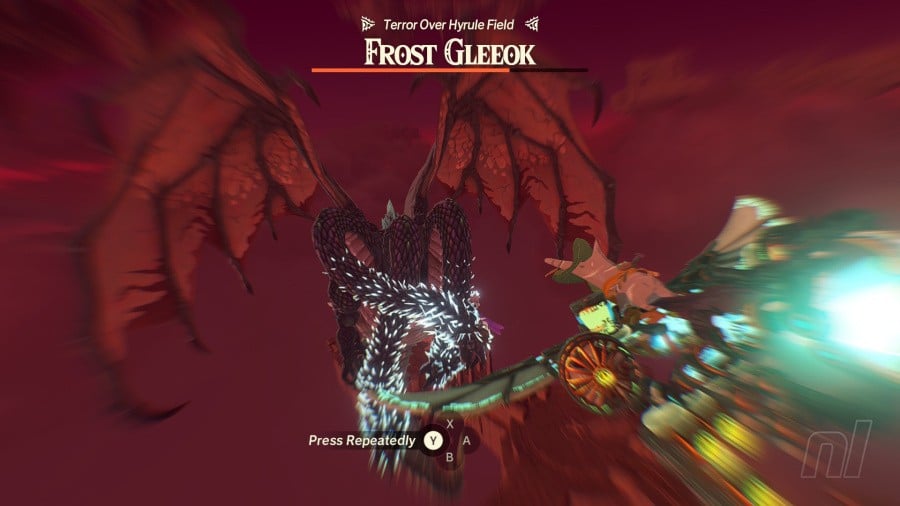
So, we’re in excellent shape so far in terms of presentation, then, and you can go ahead and add stellar voice-acting in the English dub and an excellent soundtrack to the mix. It’s top-notch stuff across the board. Heck, you can even play tracks at your leisure in a music player in the menus.
With combat, we’re building on a concept that Koei Tecmo’s teams have got down pat at this point. I considered Age of Calamity the best Musou game I’d played back in 2020, in terms of just how much depth and polish it added to the overall fighting package without spoiling the fun for folk who want mindless railing against huge crowds of dumb enemies. This game does all of that, and more besides.
This is musou that aims higher than simply button-mashing. Shielded foes require consideration, bosses can be tough, and your roster of heroes can pull off specific moves to counter aerial assaults or heavily defended units, so there’s a ‘right’ way to do things for maximum stylishness. You also now have Sync Strikes to add to an already heady mix.

Sync Strikes become available as a gauge fills by attacking and fighting well, and once your chosen character’s gauge is flashing blue, you just need to get into position (nearby an ally) and hit ‘L’ to join forces for a fancy smackdown. It’s very addictive, there are different strikes for different character pairings, and it fits in perfectly without ruining that magical musou flavour.
These new Sync Strikes also introduce a fresh flow to the core of the game that gives it a strategic lift. In Age of Calamity, or at least how I played it, my units would be split up and taking over points alone a lot of the time. Now, however, you need to consider whether or not to keep allies nearby for when you need a Sync Strike.
There are countless moments along the way, as you slice and dice across some amazingly detailed depictions of Hyrule’s famous landmarks in their infancy, where the sheer number of Moblins, Constructs, and Gorons onscreen is incredibly impressive. I’m sure these are the biggest crowds I’ve cut through in a game, and boy oh boy, with that smooth frame rate, it feels glorious to twirl and whirl through the lot of them. They’re also incredibly well-animated and detailed.
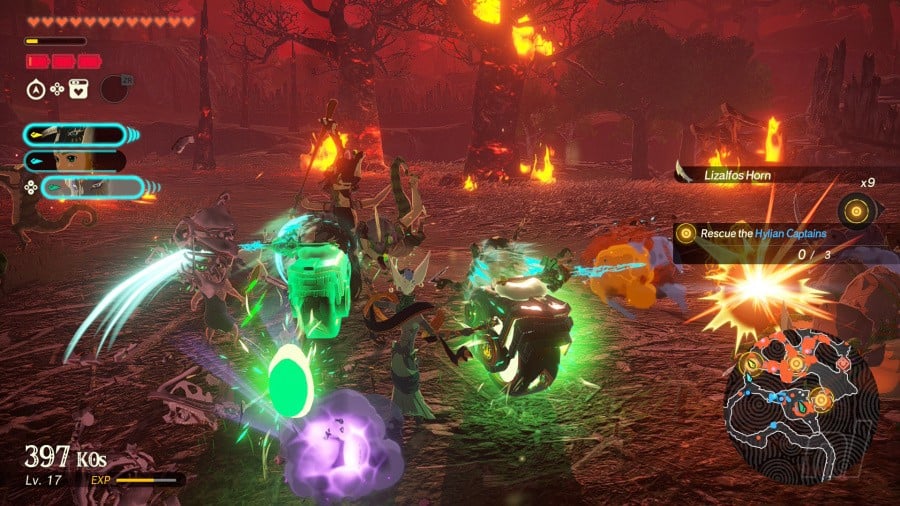
Those Zonai devices I briefly mentioned are another well-handled aspect of the fun, with all characters able to share in the action once a device has been unlocked. Rather than bringing up your Sheikah Slate with the ‘R’ button, you now bring up a menu of character-specific attacks and Zonai device slots. These can even be freely swapped out during scraps. So, Zelda has her light sword and bow attacks, her signature moves, and she can then swap in a bunch of Zonai tech to aid her.
Further to this (yes, there’s more), Zonai tech can eventually be slotted to the ends of combos, so you can throw out a bunch of light hits, then press ‘X’ to switch into heavy flow-ups that end with a Zonai device attack.
Honestly, it’s all so complex on paper, and just to think about, really, but as soon as Mineru shows up early in the campaign, once you get a shot at how this stuff works, you’ll want to use it all the time. Hey! That’s how I felt about the building and crafting in Tears of the Kingdom, too, so I guess they really have nailed the vibe.

You can drop stuff into the environment, as well, like a time bomb or a flame emitter, to get a little extra clever. Why smash someone with your sword alone when you could be smashing them while they are set alight and moving in slow motion? I have to say, too, that while some parts of Age of Calamity felt cumbersome when they gave you large machines to pilot, here any new means of locomotion (and there’s plenty this time out) handle much better.
On a negative note, as nice as the levels look across the board, and as amazing as it is to have The Depths in the mix — and to see so many franchise landmarks from a new perspective — the maps are essentially the same old straightforward boxes to run around in. There’s no real effort to deviate from the usual structure of corridors and wide open spaces.
Whilst the overall look of everything — from the world map presented on a Purah Pad to the vistas you’ll pass by as you scrap — is perfect, the ebb and flow of charging from one scrap to the next is still as basic and repetitive as it ever was beneath the fancy set-dressing.
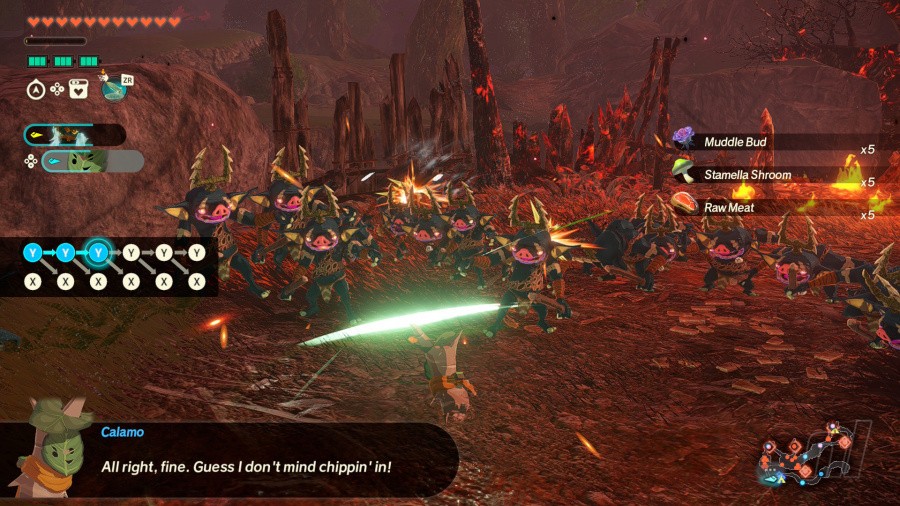
Map design niggles aside, though, it really is hard to find fault otherwise. Hyrule Warriors: Age of Imprisonment gives us a canonical prequel packed to the rafters with slick action, some great story stuff for the fans, and surprises, cameos, and fun around every corner. Once the campaign is done, there’s lots to dig into, too, and the devs ensure plenty of replayability thanks to built-in achievements and harder difficulties that really up the ante and force you to play more cleverly.
I won’t/can’t go into the Mysterious Construct character and their Korok pal (even though they are easily the coolest part of the trailers) – you’re just gonna have to find out for yourself. I also won’t/can’t go into any spoilers on the roster. What I will say is that you won’t be disappointed. The whole thing absolutely belongs, and feels as though it belongs, in terms of its polish and presentation, as part of the series proper.
Considering the series in question is one of the greatest of all time, that’s quite the accomplishment. The best musou game out of Koei Tecmo thus far, then? You betcha.
